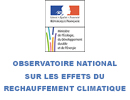The Economics of the Distributive Effects of Road-Pricing in Urban Areas
The Economics of the Distributive Effects of Road-Pricing in Urban Areas
Urban land transport does not raise only congestion and local pollution (noise, local air) issues. It is also a huge source of greenhouse gases. The figures available date back to 1992 (ADEME, 1995), but the orders of magnitude they provide remain valid today. Overall, land transport in 1992 accounted for 79% of the energy balance for the transport sector overall. The energy balance breakdown (which reflects greenhouse gas emissions) within land transport emphasises the significance of urban transport:
- Where traveller transport is concerned, 50% of energy comes from strictly-urban travel, as opposed to regional and long-distance transport.
- Where freight is concerned, the percentage is 38% and is thus lower than that of long-distance transport (46%), but remains very significant.
This means that urban land transport accounted for approximately 9% of France’s energy consumption in 1992. Out of this figure, the contribution from road transport in and of itself (automobiles, buses, taxis, etc.) is assumed to be very large.
Ever since the work carried out by economists such as Pigou or Vickrey, pricing is considered a means of public action conducive to economic efficiency. Although some initiatives are already underway (in Singapore, Oslo, Bergen, Trondheim and New York) or in the planning stages (London, Stockholm), it has been difficult to develop the solution due to acceptability issues with the general public, professionals (taxis, etc.) or elected local officials. Given this backdrop, it would appear beneficial to conduct a study exploring the distributive effects of road pricing in urban areas in France, and considering some of the most “acceptable” pricing systems, as part of a medium-term planning process on how to best limit the negative external outcomes of urban road transport.
This project’s overall objective is to carry out an economic study of the distributive effects of road pricing systems in urban areas. More specifically, the aim will be to:
- identify the distributive effects (cost and benefit allocation between different user categories) of different urban pricing formulas, tying these effects in with the economic efficiency of the said formulas.
- carry out a political economy analysis on how distributive effects interlink with political-administrative decision-making processes in the field of urban traffic policy. The aim here will be to identify how distributive effects ultimately impede the adoption of pricing systems.
The outcomes will be: the identification of forms of pricing which, in the French environment, would reconcile economic efficiency and acceptability for the public, elected officials or interest groupings. Urban toll systems can come in different forms (on access, zone by zone, based on road use time, combined with revenue recycling, etc.). However, these forms are not the same, whether in economic or environmental efficiency, nor do they have the same distributive effects or level of acceptability. In addition, certain solutions can be designed to limit negative distributive effects (for instance, price reductions on particular categories of the population, such as youth or the unemployed). The project will look into the relevance of such strategies.
| Coordinators |
Matthieu Glachant, ARMINES – CERNA |
| Funding |
MIES
|
| Budget |
89 329.99€ (including tax)
|




